8 Tips for Surviving Toilet Training in Public Bathrooms with Your Blind Child
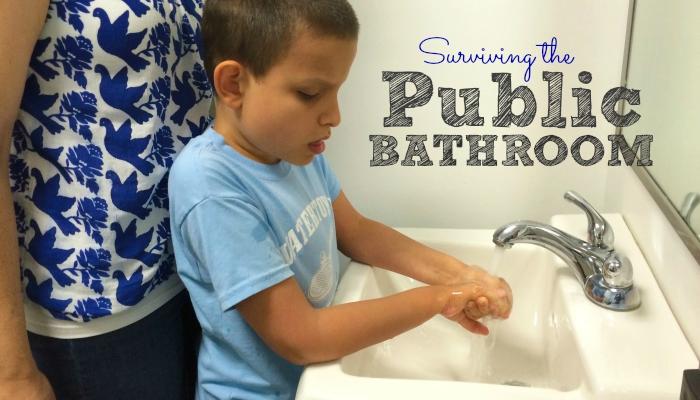
This post may contain affiliate links; please see our terms of use for details.
Ivan is 10 years old now and has multiple disabilities along with being totally blind. He’s come a long way, but he’s still not walking independently and he’s nonverbal.
But guess what? Who cares! And you know why? Because he’s doing GREAT with his potty training!!!
Yep. I’m a proud mama right here ready to announce to the world that my little guy is getting it. And if I could only choose one developmental milestone for him to master, this would be it. Being toilet trained will make a HUGE difference for him for the rest of his life.
As the mother of a boy in a wheelchair who is nonverbal, but who is also very much on board with toileting, I have to say that there has been one hurdle that seemed terribly insurmountable: PUBLIC RESTROOMS.
We can put him in pullups when we go out, but then do we really want to tell him that it’s ok to have accidents when you’re not at home? Of course not! Do you have accidents when you’re not at home?
Option two is to just never go anywhere. We could stay home forever because at least at home we know our toilet is clean and safe. But what kind of life is that?
In the past few months we’ve been tackling this big obstacle… and winning! I often wonder what we sound like to people in nearby stalls…
Please don’t pull out all the toilet paper.
Please don’t touch that then touch mommy’s face.
Let’s not flush the toilet until we’re done, OK?
Yes, there is tile on the walls. Isn’t that neat?
All accompanied by Ivan’s laughter, of course.
Since we’re doing so well, I wanted to share some things that we’ve learned about potty training along the way.
8 Tips for Success in Public Bathrooms
-
- Always bring a toilet seat. Always. We still use our tried and true Baby Bjorn Toilet Trainer even though it is getting a little small at this point. We’ve also used a folding potty seat when we had space limitations (like when flying on a plane), but these tend to not hold very much weight (the limit is 40 pounds). Special Tomato also makes a nice portable potty seat that comes in bigger sizes which we may have to graduate to soon (probably with the addition of a splash guard), but the main point here is find a toilet seat that works for you and always have it with you. We keep ours in a lovely fabric bag that zips closed. The bag is pretty and sits in the basket under Ivan’s wheelchair. No one would ever suspect there’s a toilet seat in there!
-
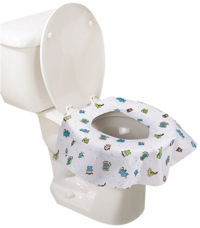 Get some oversized seat covers. These are a great addition to your public bathroom adventures! Summer Infant makes large disposable potty protectors, but you can find other brands as well. We like Summer Infant because they are BIG and cover the entire toilet, plus they have little adhesive strips to keep the covers in place. First we put down the seat cover, then our portable toilet seat on top of that and we’re good to go!
Get some oversized seat covers. These are a great addition to your public bathroom adventures! Summer Infant makes large disposable potty protectors, but you can find other brands as well. We like Summer Infant because they are BIG and cover the entire toilet, plus they have little adhesive strips to keep the covers in place. First we put down the seat cover, then our portable toilet seat on top of that and we’re good to go!
-
- Hand sanitizers can not be over emphasized! You’re the parent of a blind child so you already know this: Blind kids touch everything. And there is no exception in public restrooms! We keep a container of hand sanitizing wipes with us at all times. We leave everything cleaner than when we found it!
-
- When ever you can, develop a routine. Are there places you go to regularly, like the grocery store? We had an issue with Ivan always having accidents at the grocery store so we decided to come up with a predictable routine for him. Now, we do our shopping, then while dad is checking out and putting the bags in the car, mom and Ivan go to the bathroom. Ivan picked up on this really fast and knows that when we get to the end of the grocery trip there will always be a bathroom break so he holds it and waits for his chance. We also schedule in bathroom breaks on long trips and let Ivan know that we will be stopping at a bathroom. This has really helped!
-
- Talk it through. Talking about what we’re doing and what’s coming up next has always been a big part of our parenting philosophy with Ivan. He may be nonverbal, but I know he understands a lot of what we say and he can pick up on the verbal cues that let him know what to expect. We always use the same words (and we’ve decided it’s more appropriate to say “toilet” than “potty” when speaking to a 10 year old) and we explain a lot of things in terms of timelines (ie, first we’ll order our food, then we’ll eat, then we’ll go to the bathroom).
-
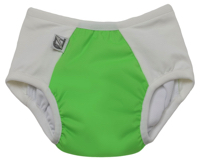 Try Super Undies! We love these training pants, and not just because of their awesome name! Super Undies are a lot like regular underwear, but they have absorbant pads sewn in to the lining. You can also add extra pads if necessary. They aren’t going to stop leaks entirely and I think that’s a good thing. It’s good to let your child feel what it’s like to be wet so they can learn to avoid it. But Super Undies will make the mess much easier to clean up when there is an accident. I also love Super Undies because they come in big sizes for special needs kids!
Try Super Undies! We love these training pants, and not just because of their awesome name! Super Undies are a lot like regular underwear, but they have absorbant pads sewn in to the lining. You can also add extra pads if necessary. They aren’t going to stop leaks entirely and I think that’s a good thing. It’s good to let your child feel what it’s like to be wet so they can learn to avoid it. But Super Undies will make the mess much easier to clean up when there is an accident. I also love Super Undies because they come in big sizes for special needs kids!
-
- Consider bathroom shoes. This may seem odd to some people, but some of you know exactly what I’m talking about. Ivan wears AFOs and is not too fond of them. In fact, he’s not too fond of shoes in general and this means that a lot of our outings end up with him in his wheelchair with socks and no shoes. And that’s fine because he’s not walking, right? But then we go to the bathroom and I am not OK with Ivan standing in a public restroom with nothing but socks on his feet! So I bought Ivan moccasin socks that I keep in my bag. They feel like socks, but there are moccasins sewn to the bottom so really they’re shoes! And when we get home I can just throw them in the washing machine.
-
- Cover up those stupid auto flush sensors. You know how some toilets flush automatically when you’re finished? Well, if you have a somewhat squirmy kid sitting on the toilet, that sensor starts going off every 30 seconds or so! Ivan learned pretty fast that if he leaned forward that would make the toilet flush and he’d do it over and over… and over again. So I learned pretty fast that if you tuck a square of toilet paper around the sensor… it won’t pick up movement. You’re welcome.
Look! He’s standing on his own!
Posted by Amber Bobnar on Saturday, January 17, 2015
One last thing I’ve learned on our toileting adventures: Public establishments need to invest in accessible facilities. Just because you put a picture of a wheelchair on the bathroom door doesn’t mean the bathroom is accessible! We need bars around the toilet, space for a chair to get in and out and paper towels or a hand dryer that can be reached while sitting in a chair (Ivan prefers hand dryers by the way). Oh… and this is a good message for restaurants: You know the hall that goes back to your bathroom? Please don’t use it for strorage. That can make it really difficult to get a wheelchair through the hall!
I wish you success on your own bathroom adventures. Some of you may still be learning the basics of toilet training a child with special needs, but if are looking for tips to help older kids be more independent in the bathroom, check out 7 Steps to Teach a Blind Child how to be Independent in Public Bathrooms.
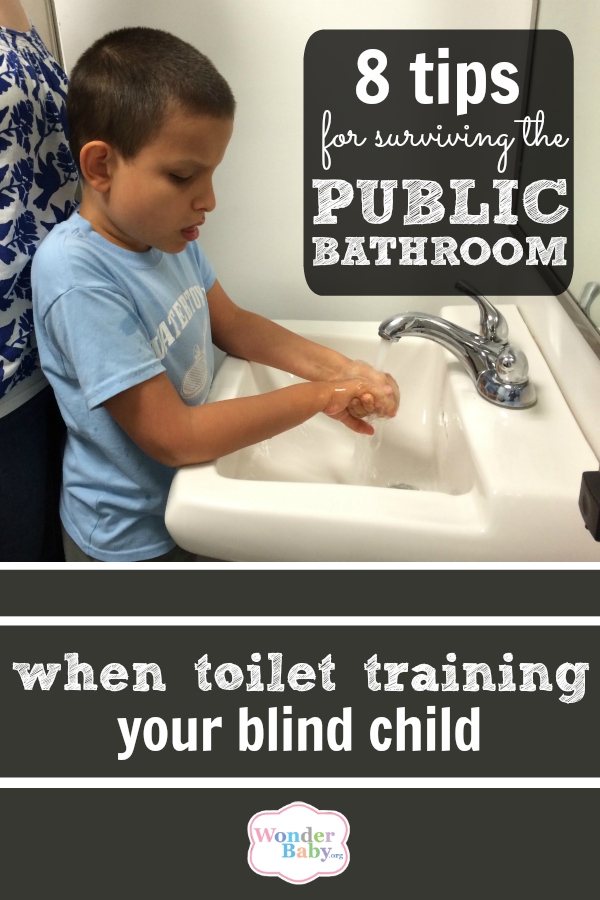
Related Posts
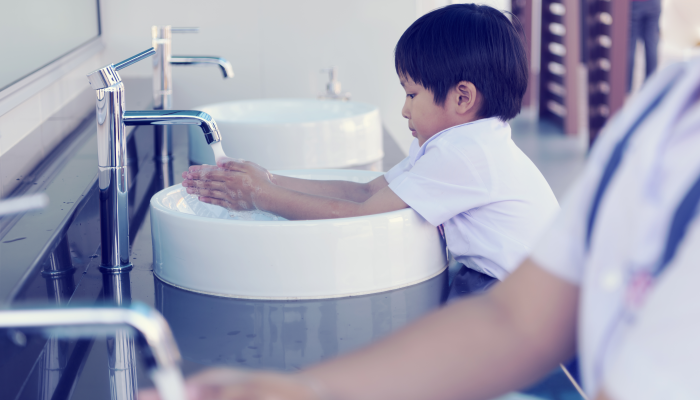
IEPs, Potty Training
7 Sample Toileting IEP Goals
Toileting IEP goals should address the specific needs and abilities of each child. Be flexible and patient as your child works on their toileting skills.
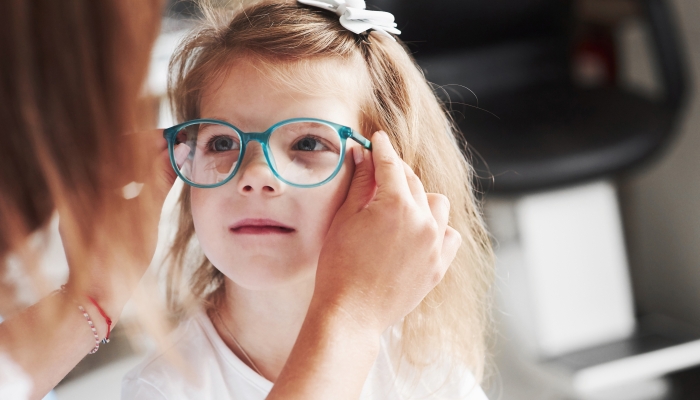
Eye Conditions and Syndromes, Support, Visual Impairment
Coping with a Diagnosis: Emotional Support for Families with Visually Impaired Children
Families with emotional support are more resilient. Learn how to establish emotional support with peers, professionals, and the community to help your family thrive.
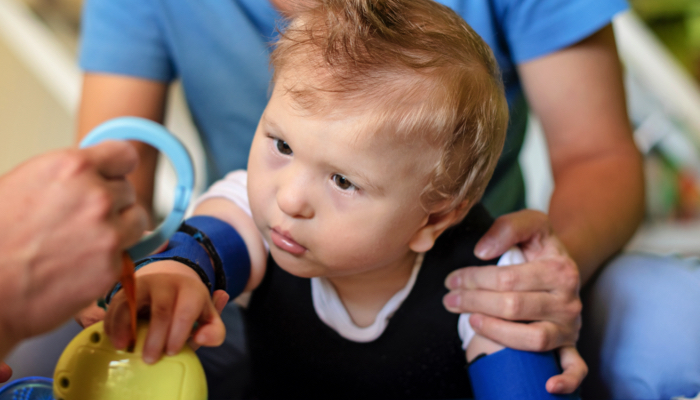
Special Needs, Visual Impairment
Why Early Intervention Is Critical for Blind Children
Children diagnosed with visual processing disorders, low vision, or blindness need specialized treatment. Early intervention programs can help.